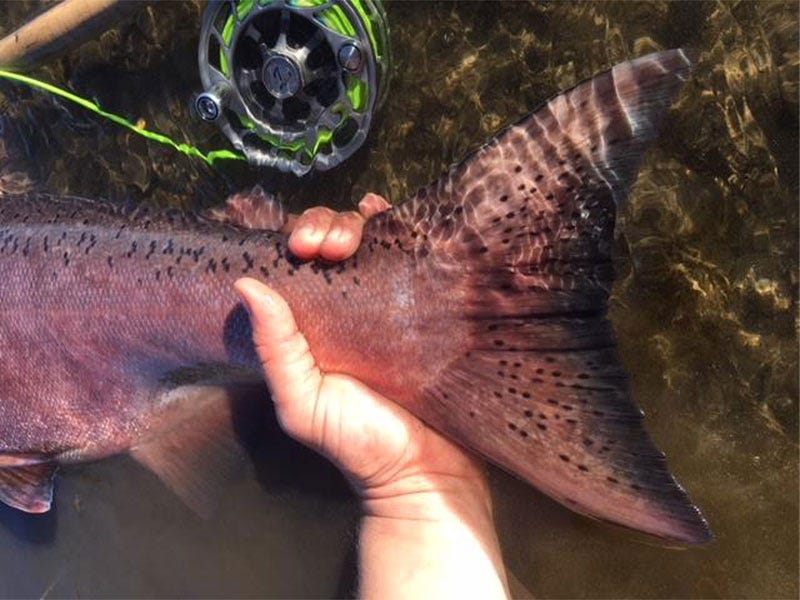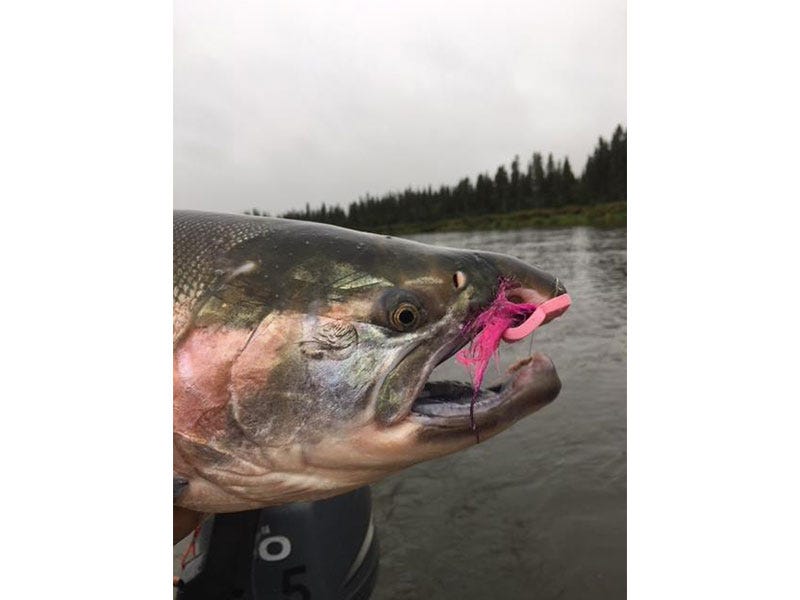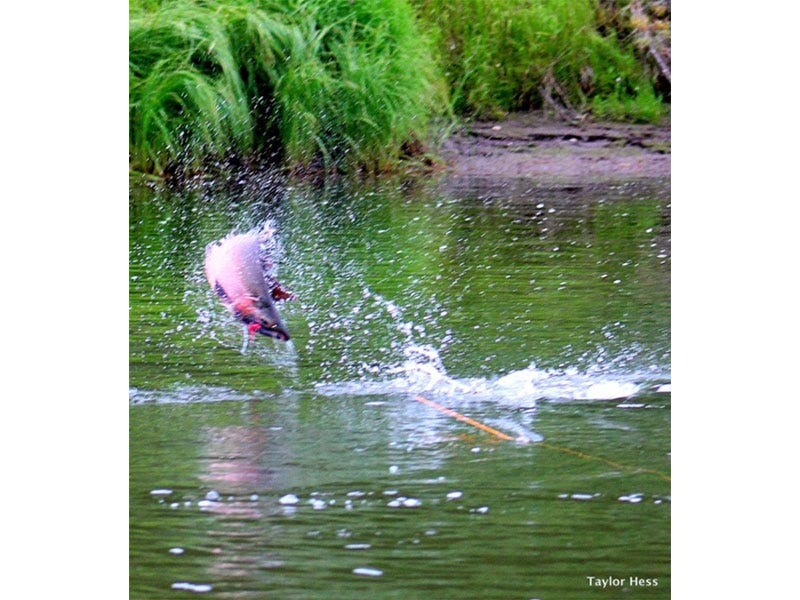Super-Secret Silver Salmon Slough


Super-secret silver salmon slough. Say that ten times fast. The phrase gives me the need to recap the past five summers of my life, all of which I spent in the bush of Alaska chasing down salmon, char, and grayling with some really great folks. Life on the tundra in the summer felt so natural and easy. Though as far north as Unalakleet lies, where I spent time, winters were harsh. I’m sure I am better off not being around the wind-swept and snowy months.
I started my journey to Alaska at age 20. I couldn’t even legally toast a beer to my fellow guides, whom all out-aged and out-knowledged me for the most part. Running jet sleds was all new to me, and wide-open waters and long casts were much more foreign to me—I was used to the smaller streams of the east, including the trickles of trout water coming off the Appalachians. The incredibly large runs of humpies kept me amused— for about a week. Here, the fish were so plentiful you could catch one on every cast. To me at the time, this was great.
Alaska dreaming? Here's what it's like to fly fish the Kenai River.
The fresh chrome chums impressed me with hard runs and dogging fights that occasionally took you into the backing of an 8-weight that was at its tipping point. Silvers, or coho, were the bread and butter of the Unalakleet River. Acrobatic jumps and insane top water eats got me hooked. It was all too good. I sort of floated through the first season. I kept my eyes open and my mouth shut so I could learn a thing or two, in hopes of being asked back the following summer. The following four years were crucial to my growth, not only as a guide but as an angler and an educator.

The Key to Consistently Catch Fish in Alaska
I learned that the key to consistently catching fish in Alaska is to never leave hot aggressive fish to find new fish. For silvers, the best setup I’ve found is an 8-weight rod with a stiff backbone and loading that thing with a +1 line size heavy. (Example: 8-weight rod = 9-weight line). Many line companies are advertising +1 or +1.5 heavy lines, such as Scientific Anglers Amplitude Anadro -having increased ability to throw heavy flies and the occasional sink tip goes a long way. I rarely fished an intermediate or sinking line. Most of the flies we threw were weighted, so tips and sinking lines were simply too much. It really boils down to how swift the water is depending on your location.
During high water times, we focused our efforts on backwaters and grass-bank sloughs. It felt more like pike or bass fishing, but these fish would hold in the grass at times. The was one place on the river we called Super-Secret Silver Salmon Slough or 5s. It was a neat, yet peculiar, spot to find fish. At normal levels, the back channel of this small island was too skinny to run any boat up, let alone fish going in. During high water, the fish would go back into this channel behind the island where there was a tannic colored creek held back by a beaver dam. Salmon, mainly silvers, would stack along the grassy bank and in tangles of gnawed sticks and branches just to seek relief from silted and muddied water. It’s amazing the places you can catch these fish!
Another high-water spot that seemed odd to hold fish was “The Pond.” Basically, it was just a large river overflow and a pool of an old oxbow that had just enough current and clean water to draw fish in. If you took a paddle or an oar and slapped the surface of the water, the entire pond looked as if someone set fire to the bottom of it and it would begin to boil. Fish in a barrel? Definitely.
Flies that Catch Fish in Alaska
These situations called for either top-water flies, or just a full float line and an un-weighted pattern, so you weren’t spooking fish by drawing your leader and fly over their backs. (Just keeping the fly in the fishes’ faces is half the battle.) As for fly colors, I rarely threw anything but pink. Pink is the jam. Though black, blue, orange, and chartreuse produced many a fish. The fishing in the great white north can’t be beat, and I’m bound to return someday.
Travel to Alaska has become a bit easier and cheaper in the past decade. The state is definitely opening up a little more each year and becoming connected to the lower 48. Fishing in the bush can be pretty special if you get hooked up with the right gear, flies, and outfitter. As for getting your gear there, think about all the packs and bags you use while fishing or storing gear. Utilize these bags and packs. Take out the non-essential gear for the trip and use them as carry-ons (unless they stink like froggy river water). This ensures that you have your favorite packs and bags, and you save space, and maybe a bag fee.

Alaskan Salmon Starter Pack:
Single Hand
Reel: Ross Cimarron 9/10
Line: Scientific Anglers Amplitude Anadro WF8F
Backing: 30# Dacron
Two-Handed
Rod: Echo TR 13’0’ 7wt.
How does the Echo TR perform? Read our review here.
Reel: Echo Bravo 8/10
Line: Airflo 540 gr Skagit G2 or Airflo 510 Scandi Compact
Running Line: Rio Connect Core 0.32” Shooting Line
Backing: 30# Dacron
Waders & Gear
Waders: Simms G3
Boots: Simms Vapor Tread Boot
Pack/Bag: Simms Dry Creek Boat Bag
Dry Bag: Loop 50L Swell Dry Bag
Sunglasses: Costa Rincon 580P – Green Mirror/Amber Lens
Read how Costas help you to see more fish.
Rain Jacket: Patagonia River Salt Jacket
Layer: Simms Coldweather Flannel
By Taylor Hess
